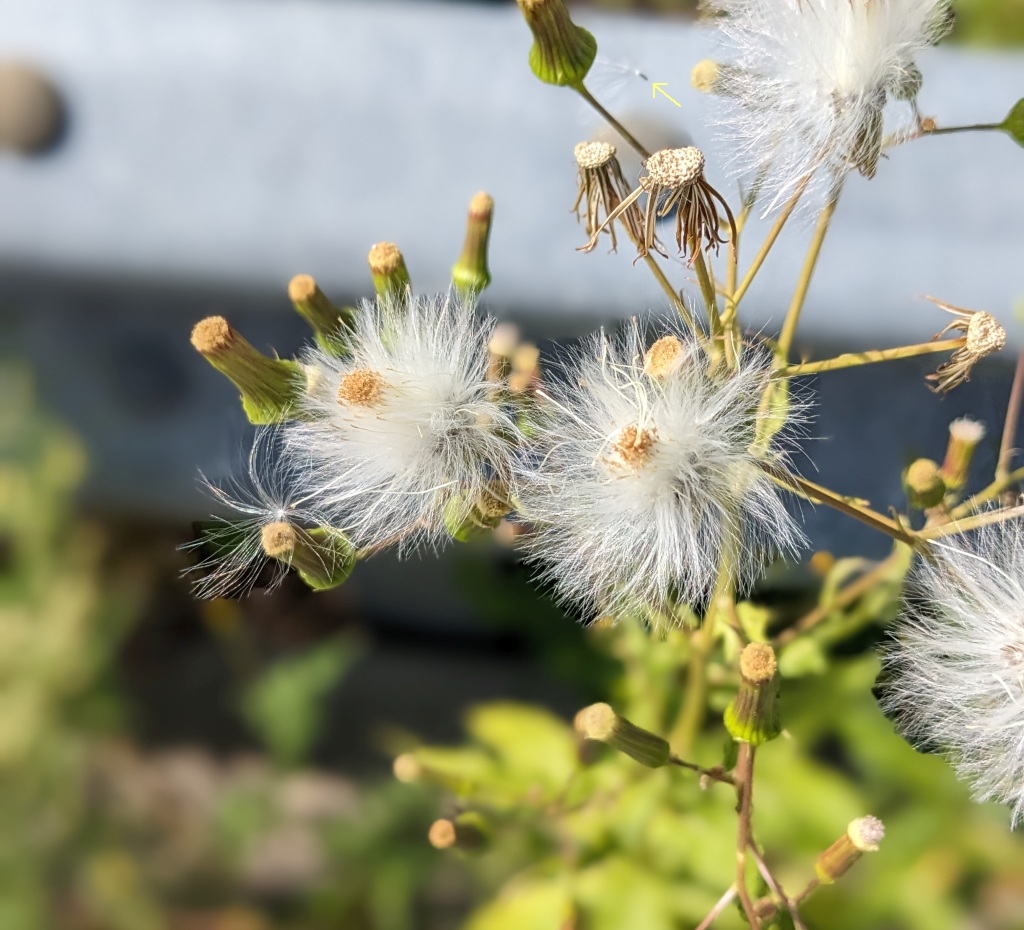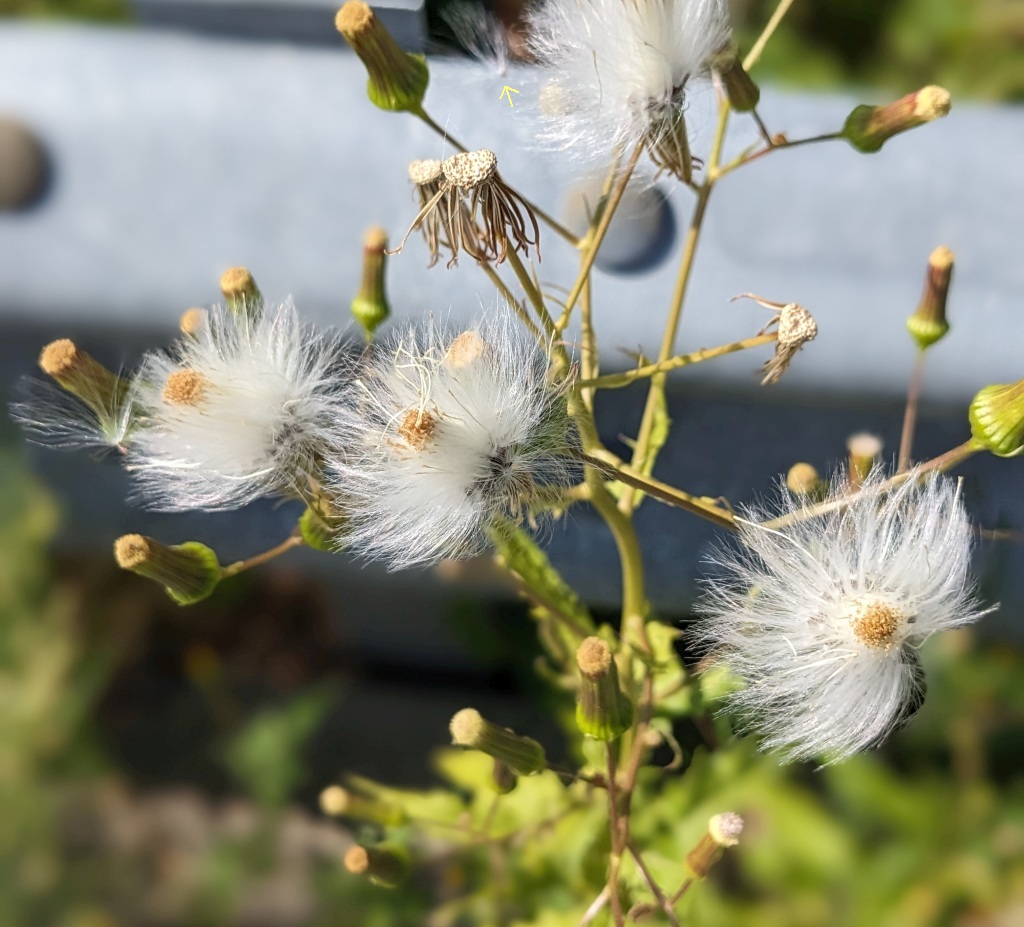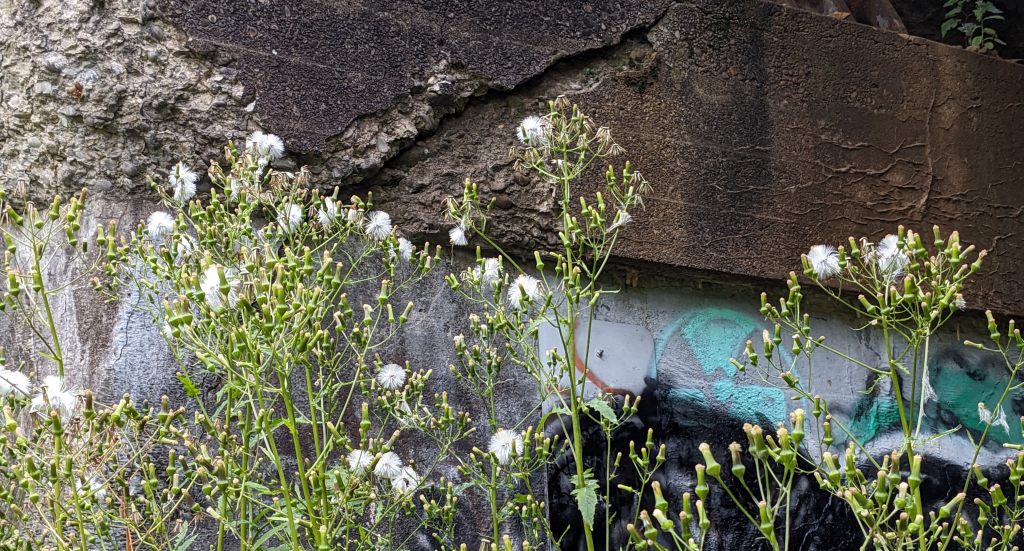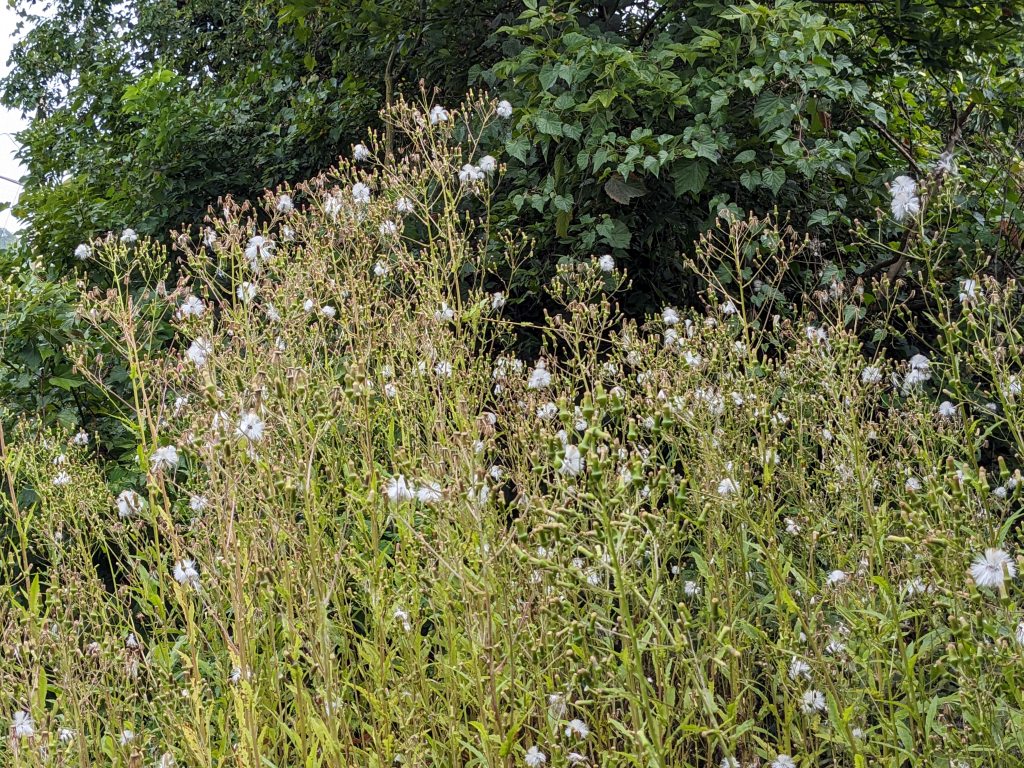
25 September 2023
Have you seen white fluff blowing in the wind lately? The fluff is not from dandelions. At this time of year it’s from pilewort.
Pilewort (Erechtites hieraciifolius) is a native plant in the Aster family that looks very weedy, even ugly. At two to eight feet tall the flower heads on the tips of the branches look like seed pods because they barely open to expose pistils and stamens. To appreciate the flower you need a magnifying glass. Its beauty is microscopic.
It doesn’t take much wind to set it going. Do you see the flying fluff in this closeup? Look for the tiny yellow arrow in this photo and the one at top.

Why is it called pilewort? The common name literally means “hemorrhoid plant.” Penn State Extension explains.
Native Americans used American burnweed [pilewort] to treat rashes caused by exposure to poison ivy and poison sumac. Medicinally, it has also been used as an emetic and to treat dysentery, eczema, diarrhea, and hemorrhoids. It has been used to create a blue dye for wool and cotton and, despite its intense flavor, can be eaten raw or cooked.
— Penn State Extension: American burnweed
Pileweed’s other common name is American burnweed because it grows easily after brush fires. It loves disturbed soil and is easy to find by the side of the road, in churned up gardens, and in urban areas. In this age of bulldozers, roto-tillers and garden digging, pilewort has many opportunities to germinate.
I found a lot of it at Duck Hollow.


Perhaps it’s a good thing that pilewort grows prolifically. A 2002 study in Japan found that Erechtites hieraciifolius is good at absorbing the greenhouse gas, nitrogen dioxide, turning it into an organic form.
It may not be beautiful but pilewort plants itself by the side of the road and then cleans the air.
(photos by Kate St. John)
Thanks for highlighting this early colonizing native! I dealt with it a lot as a weed in a newly made garden bed at Grandview Park in EVP last year. Called it fireweed. Super easy to pull due to its shallow roots. I read that its appearance in the landscape together with pokeweed is an indication of soil disturbance, which makes sense. It’s nice to know that even when a plant is not particularly pretty to look at, it is doing valuable work to bring back soils to continue succession and provide food for small pollinators. I have not yet seen it in Hays Woods but I bet it is there somewhere.
Aaaaand found it. Lots by the waterfall on the way out to the railroad. Also at the northern corner with the transmission tower.